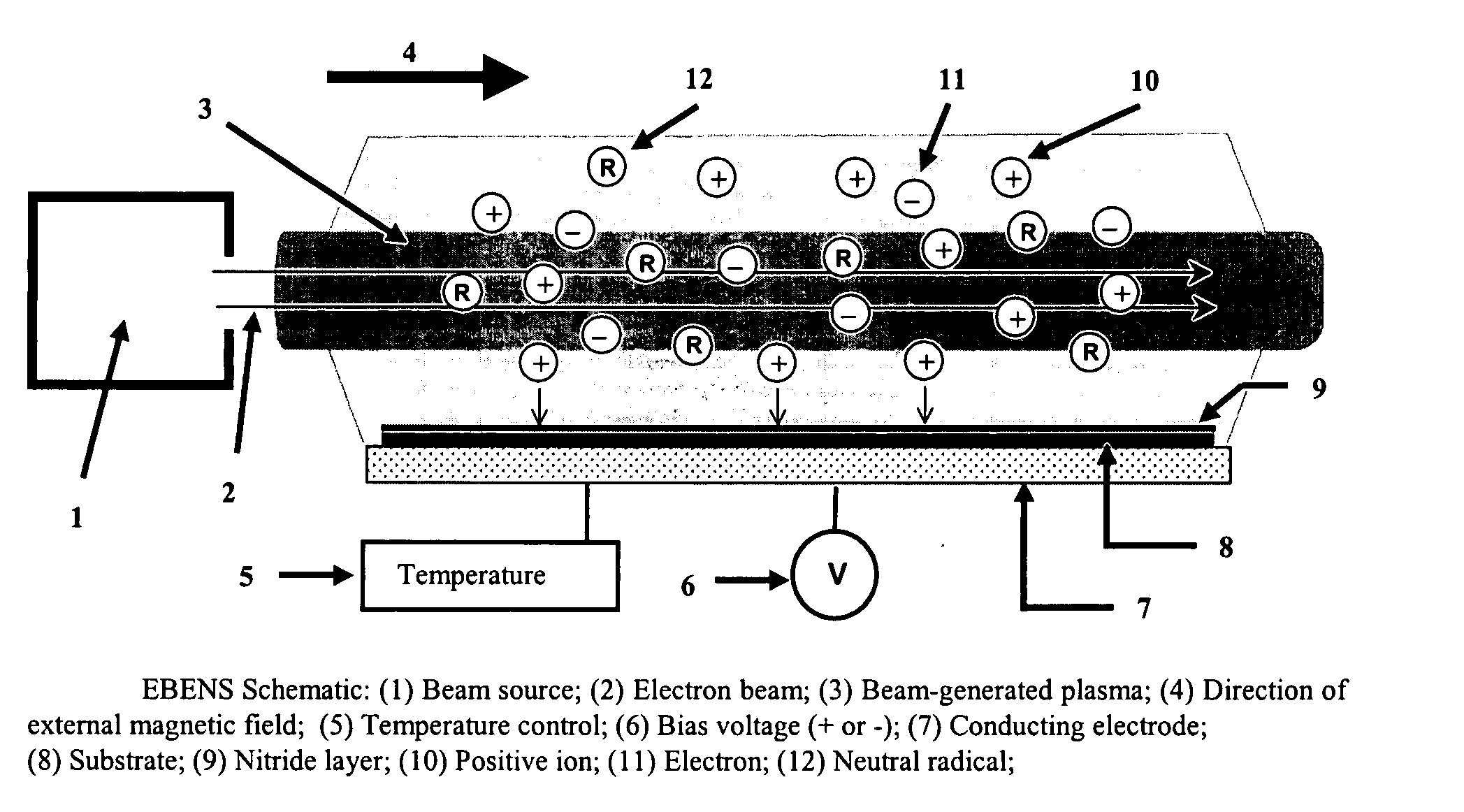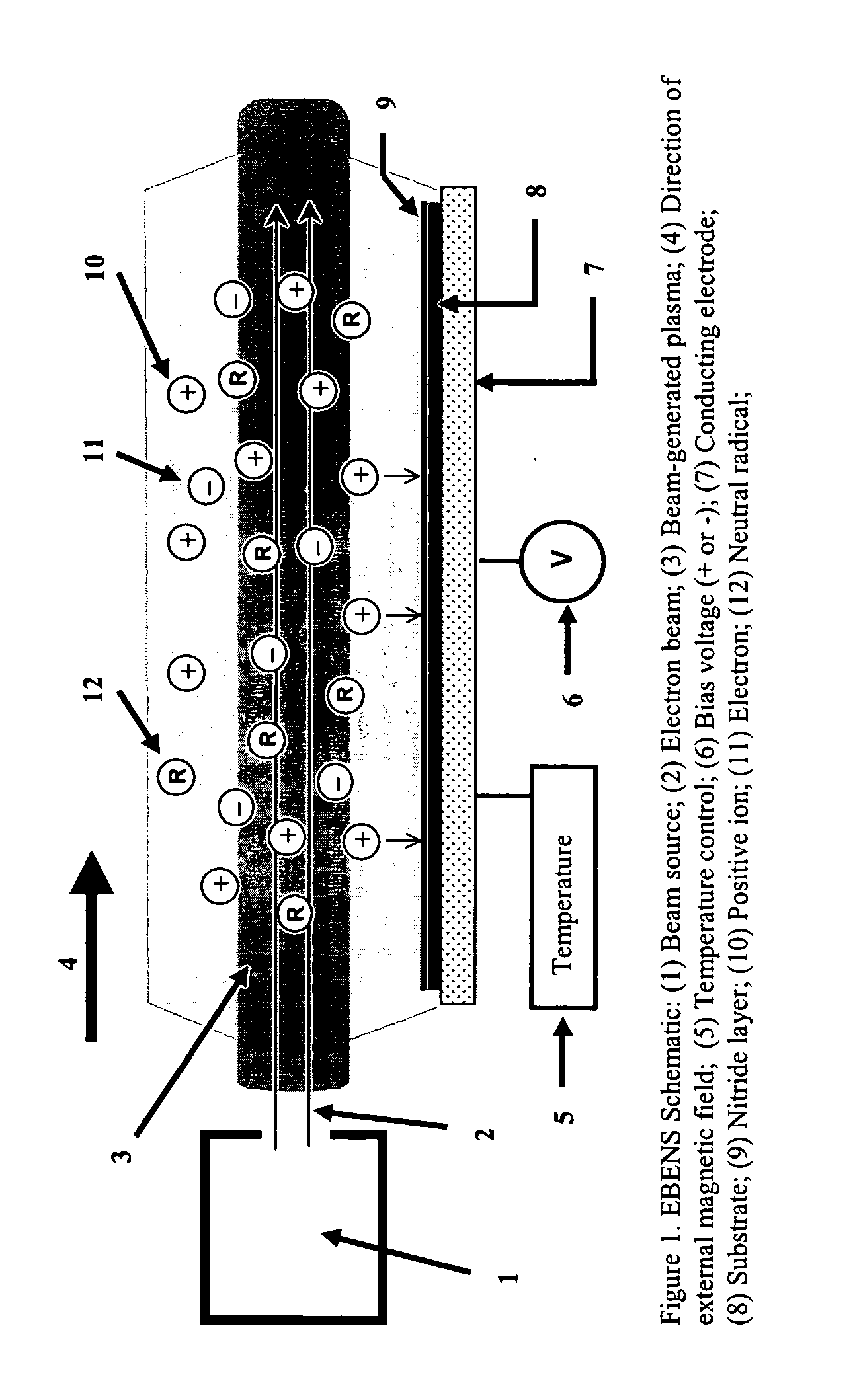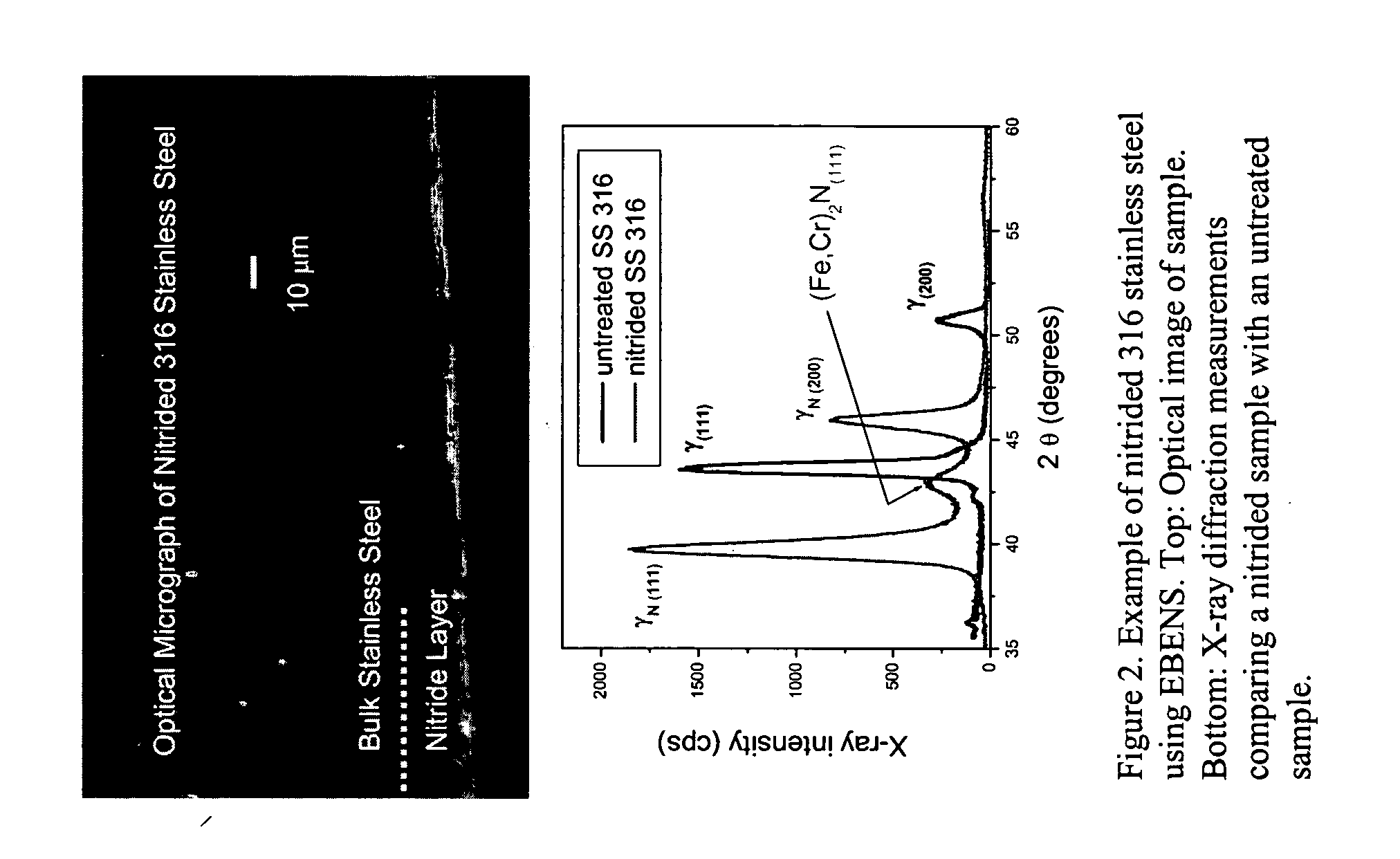Electron beam enhanced nitriding system (EBENS)
a technology of enhanced nitriding and electron beam, which is applied in the direction of solid-state diffusion coating, plasma technique, coating, etc., can solve the problems of high strength-to-weight ratio, many engineering materials exhibit undesirable property changes, and materials typically exhibit high wear rates, etc., and achieves easy scaling
- Summary
- Abstract
- Description
- Claims
- Application Information
AI Technical Summary
Benefits of technology
Problems solved by technology
Method used
Image
Examples
Embodiment Construction
[0020] A preferred embodiment of the Electron Beam Enhanced Nitriding System (EBENS) of the present invention as shown in FIG. 1 includes a beam source 1, an electron beam 2, a beam-generated plasma 3, a direction of external magnetic field 4, a temperature control 5, a bias voltage 6, a conducting electrode 7, a substrate 8, a nitride layer 9, a positive ion 10, an electron 11, and a neutral radical 12. EBENS uses a multi-kilovolt (2-5 kV) sheet electron beam that is injected into a nitrogen-based background. The beam is magnetically confined and efficiently ionizes and dissociates the background gas. The beam width (into page) is variable and can exceed a meter. The thickness is up to a few centimeters and is maintained over the beam length by an axial magnetic field that exceeds 100 Gauss. The length of the plasma sheet is determined by the range of the electron beam, which scales roughly as the beam energy squared divided by the gas pressure (E2 / P). The range is usually maintain...
PUM
| Property | Measurement | Unit |
|---|---|---|
| depth | aaaaa | aaaaa |
| discharge voltages | aaaaa | aaaaa |
| area | aaaaa | aaaaa |
Abstract
Description
Claims
Application Information
 Login to View More
Login to View More - R&D
- Intellectual Property
- Life Sciences
- Materials
- Tech Scout
- Unparalleled Data Quality
- Higher Quality Content
- 60% Fewer Hallucinations
Browse by: Latest US Patents, China's latest patents, Technical Efficacy Thesaurus, Application Domain, Technology Topic, Popular Technical Reports.
© 2025 PatSnap. All rights reserved.Legal|Privacy policy|Modern Slavery Act Transparency Statement|Sitemap|About US| Contact US: help@patsnap.com



